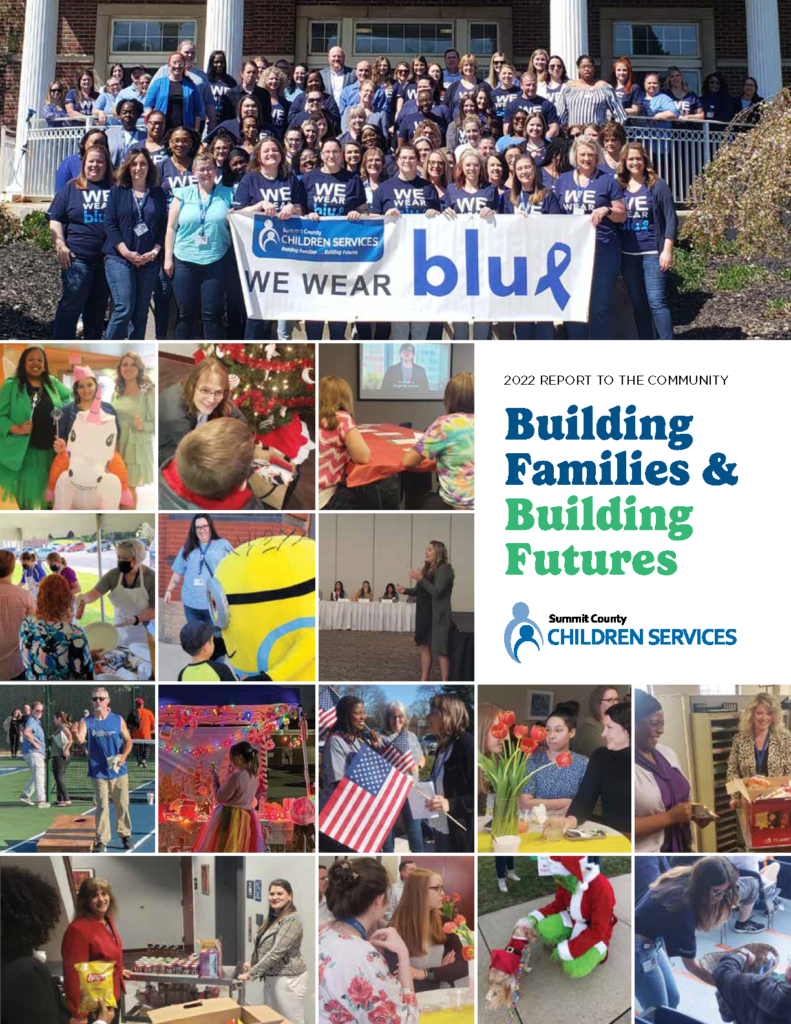The Five Mandates: Cornerstones of Today's Child Welfare System
 Throughout the history of the United States, the child welfare system has evolved according to changing beliefs and attitudes about what role government should play in the protection and care of abused and neglected children. The great debate and dilemma for child protection services is the rights of parents versus the best interests of the child. During the last half of the twentieth century, federal and state laws have evolved dramatically within the context of a changing society highlighted by the establishment of five major child protection mandates among many other less significant but equally compelling expectations on the child protection services system.
Throughout the history of the United States, the child welfare system has evolved according to changing beliefs and attitudes about what role government should play in the protection and care of abused and neglected children. The great debate and dilemma for child protection services is the rights of parents versus the best interests of the child. During the last half of the twentieth century, federal and state laws have evolved dramatically within the context of a changing society highlighted by the establishment of five major child protection mandates among many other less significant but equally compelling expectations on the child protection services system.
I. Investigation
Ohio law ((R.C. 5153.16(1)) mandates the public children protection services agency in each county to “(m)ake an investigation concerning any child alleged to be an abused, neglected, or dependent child.” Federal and state laws also detail how such investigations are to be done.
A child protection services investigation is the investigation of allegations into the neglect, abuse or dependency of a child or children. It is an administrative investigation and not a criminal investigation, and is done for the purpose of determining whether intervention is necessary to protect a child and to determine what services should be provided to a family. The investigation process begins with a report of child abuse and/or neglect of a child living with their birth family or other placement. Reports are screened to determine if the reported information constitutes a report of child abuse and/or neglect in accordance with federal law. In Ohio, an investigation can result in one of three findings: substantiated, indicated or unsubstantiated. The child protection services investigator is also responsible for assessing the risk of further harm or injury to a child.
The report must concern an alleged child victim under the age of eighteen, a parent or caregiver as the alleged perpetrator, or an unknown perpetrator, and an allegation that the condition of the child presents a substantial risk of harm to his health or welfare.
Child protection services investigations are separate and serve an altogether different purpose than police investigations into allegations of child abuse.
During the 1970s, as the number of children entering care significantly increased, so, too, did their length of stay in care. Lawmakers became increasingly concerned that many children were being removed from their homes unnecessarily, and that, once they entered foster care, inadequate efforts were made to either reunify them with their biological families or place them with adoptive families. By 1980, more than 550,000 children were placed in temporary foster care homes across the nation. In that same year, the Adoption Assistance and Child Welfare Act of 1980 (P.L. 96-272) was passed establishing a “reunification” mandate.
II. Reunification
The Act was passed to correct or alleviate problems in the foster care system. A major goal of the act was to encourage social workers to work toward reunification of the family by making “reasonable efforts” to avoid long-term foster care for the children if possible. If the child could not be returned to the family, another plan was to be sought: adoption, long-term foster care or another permanency plan.
The Adoption and Safe Families Act of 1997 (P.L. 105-89) made the most significant changes to the child welfare law since they had been established in their current form in 1980. ASFA principally addressed three general perceptions about the current child welfare system:
- Children continued to remain too long in foster care;
- The child welfare system was biased toward family reunification and preservation at the expense of the safety and well-being of children; and
- Inadequate attention and resources were devoted to adoption as a permanent placement option for abused and neglected children.
As a result, three new major mandates were added to the child protection system, i.e., child safety, permanency and child well-being.
III. Child Safety
IV. Permanency
V. Child Well-Being
The child protection system today goes well beyond the traditional role of safety and permanency and recognizes the need to address the whole child and all of his or her needs. Thus, we are increasingly addressing child well-being indicators such as the child’s mental and physical health, including access to health care, cognitive functioning, social and emotional health and a wide range of variables including education, economic security, food and housing as well as family/neighborhood environments.
Call the Summit County Children Services hotline at 330-434-5437 if you have an immediate concern for the welfare of a child.






